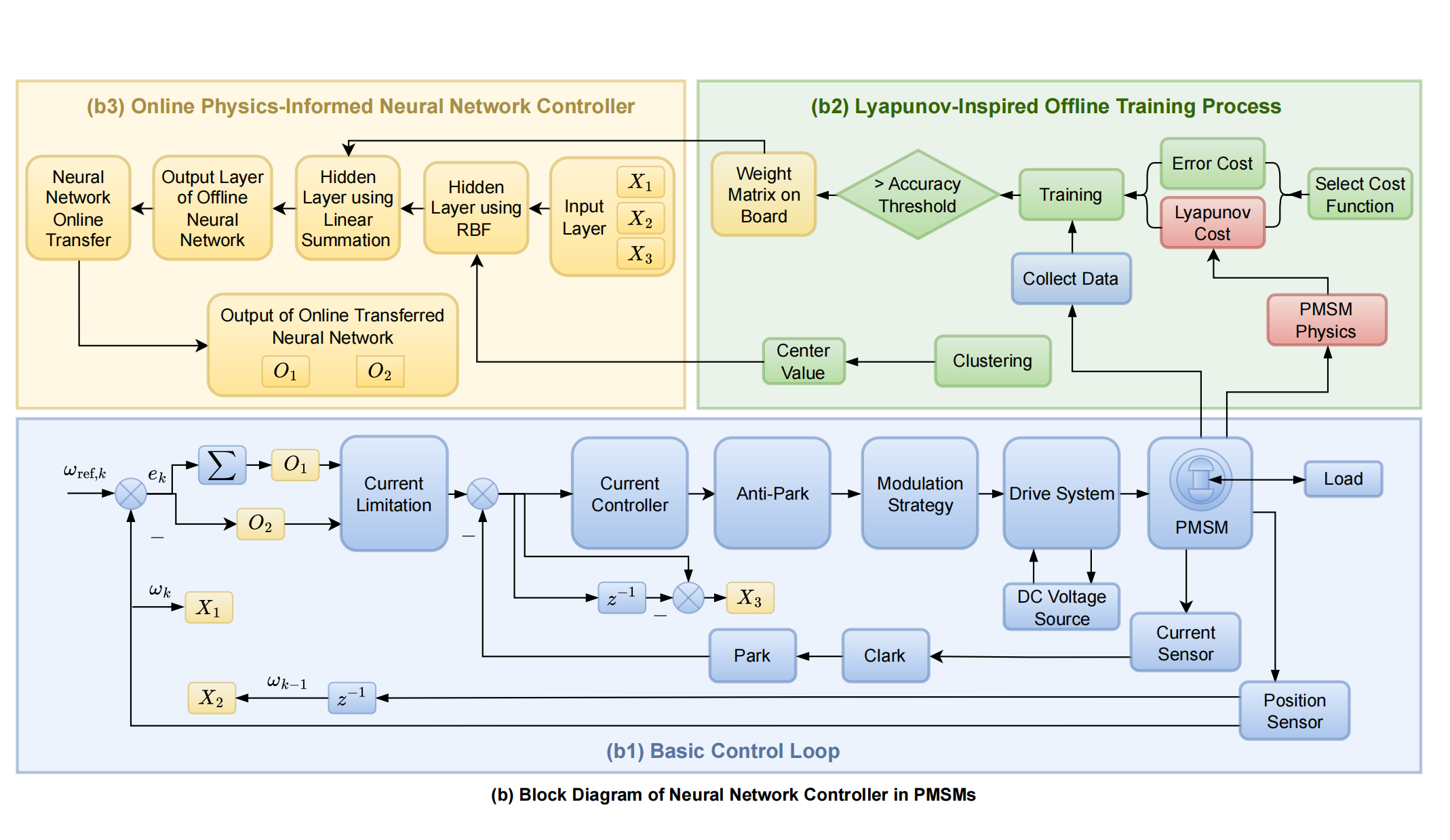Advanced Motor Drive Technologies (AMDT) Lab Website
Artificial Intelligence (AI) is catalyzing revolutionary transformations across various industries, altering research methodologies in numerous disciplines, with engineering no exception. Electric motors are one of the pillars of modern society, and they have wide applications in the areas of embodied intelligence agents, humanoid robots for instance, transportation electrification, etc.
Our lab focuses on advanced motor drive technologies, especially utilizing AI to reshape and even redefine electric machine design, control, and the corresponding application scenarios. Some primary research directions are as listed as follows:
- Intelligent electric motor design and optimization;
- Learning-based electric motor control;
- Applications of electric motors in robotics and autonomous systems (ROAS), including UAV, robotic scientist, and smart grid.
Highlights

Intelligent electric motor design and optimization
Electric motors are evolving towards more intricate structures with higher power density and precision, and multiphysics interaction should be considered to approach material limitations. Furthermore, the coupling of electric motors with motor drivers, reducers, propellers, etc, makes its structure optimization more complicated and time-consuming. To address these issues, we aim to utilize machine learning-based surrogate modeling to accelerate the optimization process while maintaining high fidelity.
The figure on the left shows our self-developed robot joint module combining a hybrid planetary gearbox, an axial-flux motor, and a GaN-device motor driver for humanoid robot applications. This module is of high torque density, efficiency, and reliability.

Learning-based electric motor control
The control of electric motors used outdoors, such as humanoid robots and UAVs, is much more challenging than indoors. Learning-based algorithms are suitable for handling parameter variation and unknown disturbances. When trying to deploy these advanced algorithms to commercialized MCUs, we aim to solve the two related critical issues: 1) the interoperability of .learning-based algorithms, and this is to ensure the stability of the controller; 2) the real-time deployment of learning-based algorithms and this is to ensure the performance and robustness of the controller.
The figure on the right shows our solution for an intelligent motor control algorithm, which can be pre-trained offline and deployed online on a commercialized microcontroller. The proposed algorithm is highly adaptable and suitable for applications with parameter variation and unknown disturbances.

Applications of electric motors in ROAS
Electric motors are now widely used in robotics and autonomous systems, including but not limited to actuators in embodied intelligence agents (humanoid robots), propulsion motors in UAVs & eVTOLs, and electricity generation & storage in smart grids. We aim to explore and extend the boundaries of these applications further by artfully integrating emerging design, control, and monitoring methodologies of electric motors into them.
The figure on the left shows our self-developed UAV with our own electronic speed controller and zero-speed-drop motor control scheme, and this UAV has strong anti-disturbance capability.
